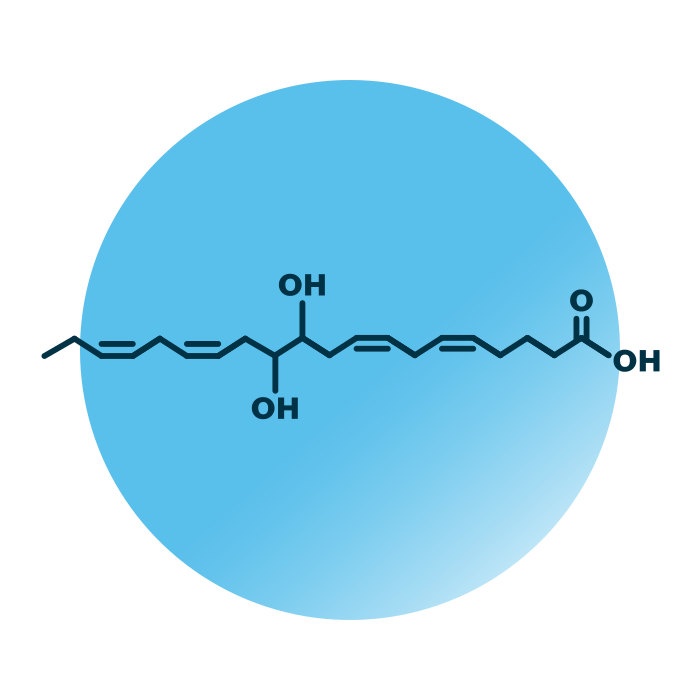About the structure and biological function of oxiETE
Structure. Oxidized eicosatetraenoic acids (oxiETE) belong to the group of eicosanoids within the fatty acyls. Their structure is based on eicosanoic acid, a twenty carbon atoms long hydrocarbon chain with a carboxyl group. The chain contains four double bonds, from which their name derives. OxiETE may further encompass multiple hydroxy groups as well as other oxygen containing substituents.
Function. Oxidized eicosatetraenoic acids are associated with a wide array of biological functions ranging from signaling, ion transport, renal and pulmonary functions, to growth, and inflammatory responses. They can act through both receptor and non-receptor mechanisms, and identical oxiETE species may trigger different or opposing effects depending on cell types. Further, oxidized eicosatetraenoic acids are biosynthetic intermediates to a variety of other eicosanoid lipids.
